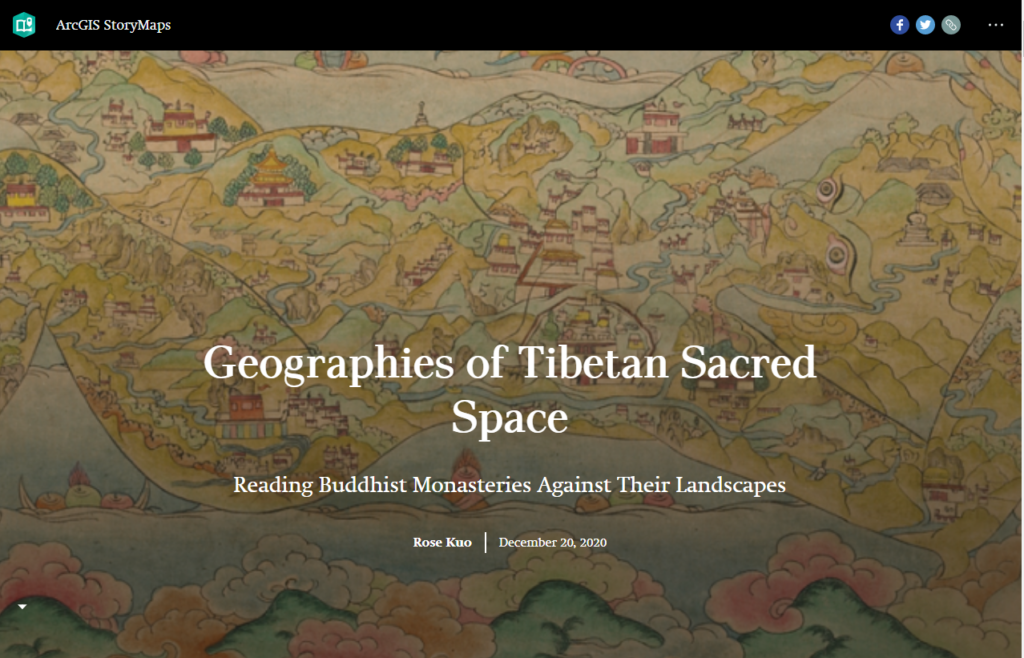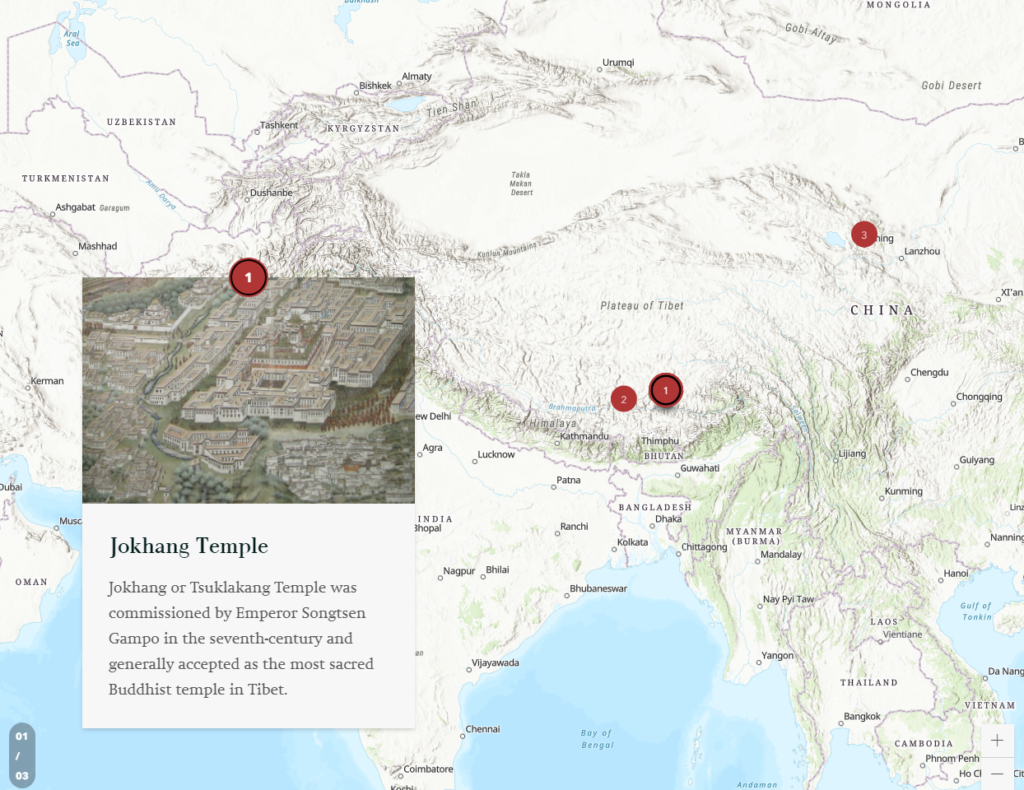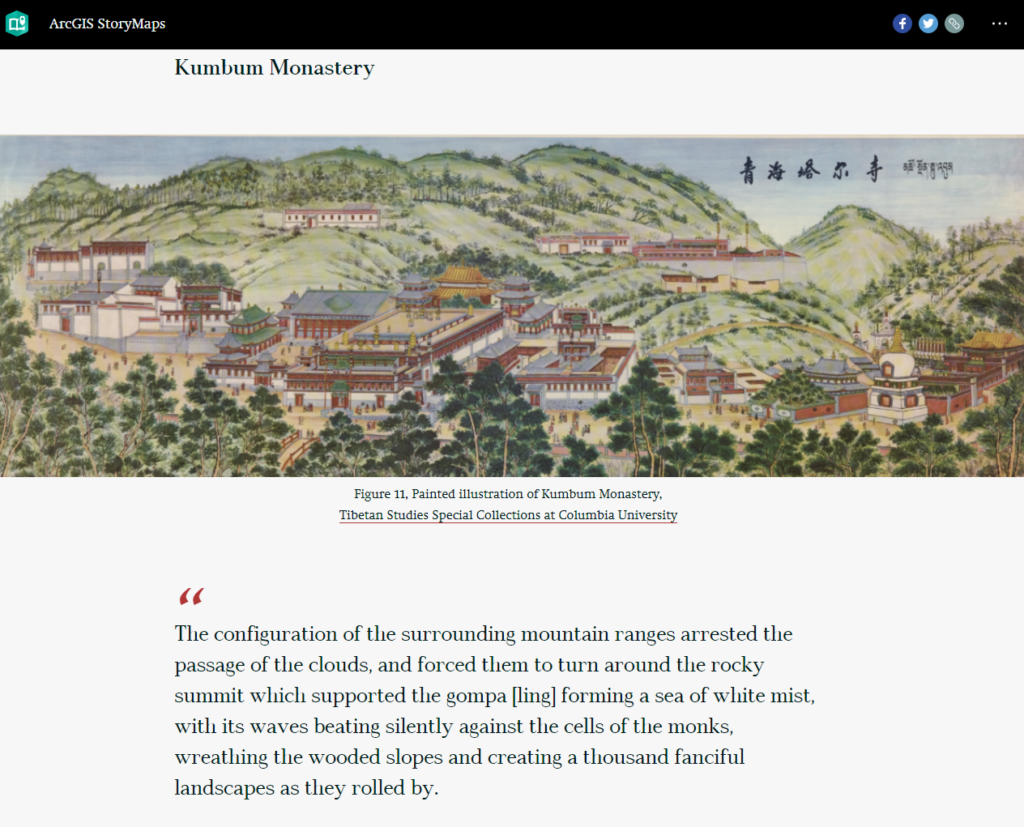Reading Buddhist Monasteries Against Their Landscapes
Rose Kuo | December 20, 2020 | Website: ArcGIS StoryMaps
Sacred Space
This project is inspired by the study of environmental perception advanced by scholars such as Belden C. Lane and Tim Ingold, cited by Federica Venturi in her work on sacred spaces and the Monastery of Sakya (Lane 2001, Ingold 1993, Venturi 2013). Sacred space, according to these scholars, cannot be understood without taking into account the role that environment played in shaping its sacrality. As Lane argues, the environment is “yet another participant in the process of perceiving and experiencing sacred places (Lane p.58).” In other words, owing to their particular topographic features, landscapes themselves “elicit and contribute to the character of sacredness attributed to them (Venturi p.25).” Thus, a place is sacred precisely due to its surrounding environment.


